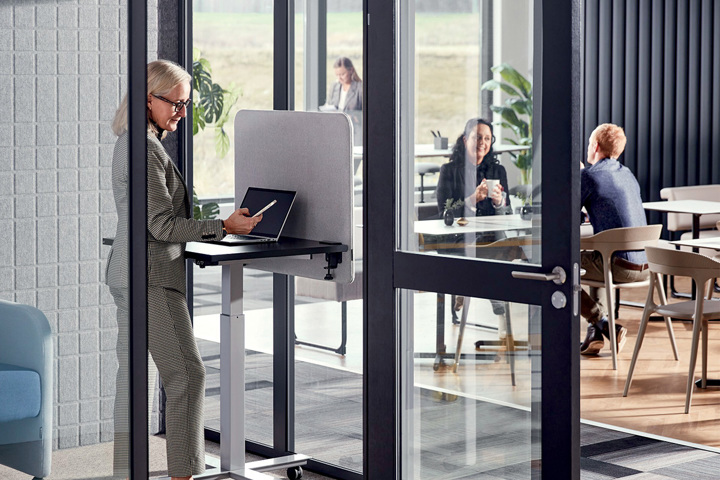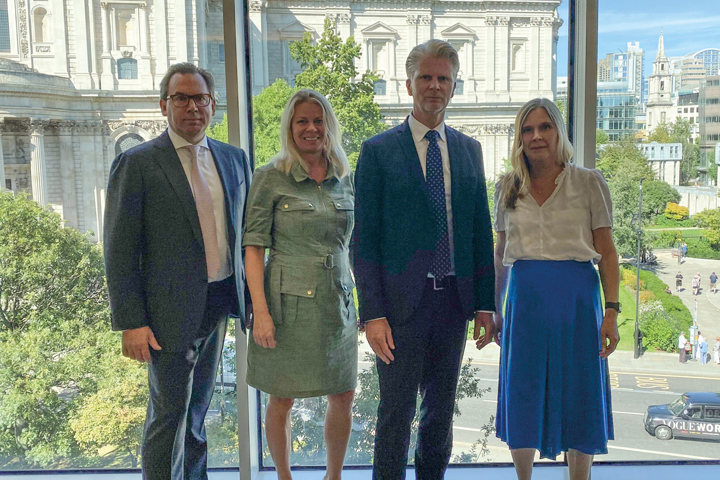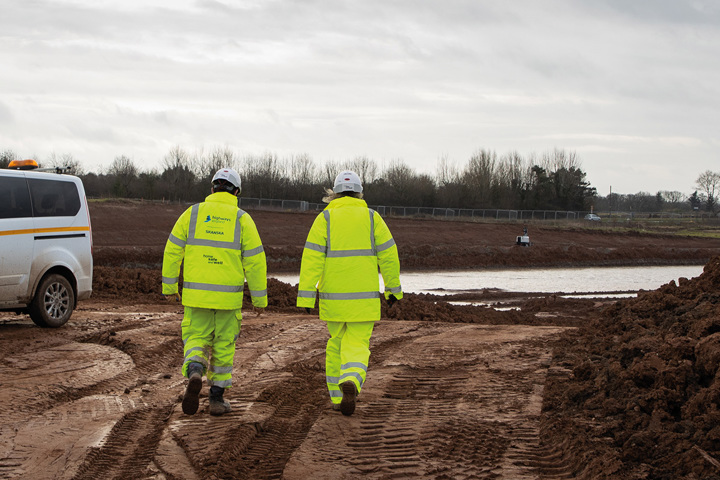
Redefining the office space
8 November 2023
In the course of finding the right balance between working from home and a hybrid work model, listening to the employees, and understanding their needs is key to creating a well-functioning, flexible and attractive office space. “What we’re seeing is employers trying to pull employees back into the workplace with more collaborative spaces, with facilities and amenities that suit the needs of the employees today,” says Helen Beebe, Managing Director of AJ Products in the UK.
Founded in 1975 in Hyltebruk in Sweden, SCC member AJ Products has been offering workplace furniture and equipment to businesses for nearly 50 years. Today, the company is headquartered in Halmstad and is operating in 21 countries, including the UK. “We’ve been trading here for 24 years, and the business continues to grow, which is encouraging,” says Helen Beebe, Managing Director of AJ Products in the UK.
AJ Products manufactures most of its product range at its own production sites in Poland, Slovakia, and Lithuania. While specialising in office and industrial furniture, the range of more than 18,000 products encompasses areas such as reception spaces, sports facilities, changing rooms, and schools. “Any sort of workplace furniture and equipment that you might need, we most likely have.”
On top of the product offering, businesses in need of support are provided with bespoke and personalised service, ranging from advice and design of spaces, all the way to delivery and installation. “It is really an end-to-end service tailored to the customers’ needs.”
From WFH to hybrid working
Looking at office spaces and how people use them, it is clear that the Covid-19 pandemic turned everything we know upside down – something that Helen says was instantly noticeable in customer demand. “We were selling an awful lot of smaller desks during the pandemic, because people were working from home. But that’s now slowing down.” Equally today, long after restrictions were lifted, the effects of the pandemic are still apparent but have taken a slightly different form. “People have started returning to the office, but there is still a big emphasis towards working from home or hybrid working. What we’re starting to see now is that people are realising that remote working isn’t always the best option, and that it comes at a cost.”
“From a personal perspective, people are seeing the impact on their wellbeing and their health. From a business perspective, businesses are always trying to develop their cultures and keep strong collaboration and communication amongst their teams, and that can be really challenging.”
Finding the right balance
Helen believes that there is an increasing need to find the right balance, both from the employee and the employer perspectives. “What we’re seeing is employers trying to pull employees back into the workspace with more collaborative spaces, with facilities and amenities that suit the needs of the employees today.” And the same tendencies are seen among employees: “I think they’re yearning more communication and stronger relationships that you just can’t forge over a zoom call.”
Downscaling and flexibility
Since fewer people are spending time at the office, employers have started to downscale the amount of space they need. “But of course, this means that they have to make it more flexible,” Helen says. “Things like hot desking seems to be increasingly important. And with hot desking, you can’t personalise your desk as a permanent thing, you need to free up the desk for the next person to use on another occasion. Now we’re seeing increasing use of lockers, so people can lock their belongings away when they’re not in the office.”
The need of flexibility also comes with an increasing need of multifunctional spaces, such as meeting rooms that can be used as reception spaces, that can also serve as personalised workspaces. “What we are seeing from this development is that acoustics are an increasing challenge. We supply acoustic boards, desk dividers and acoustic booths for people to go and work in. I think they are becoming increasingly popular as this transition takes place.”
Involving the employees
Helen sees an emerging trend among businesses to not only accommodate working time requirements, but also the after-hours requirements of their employees. “People need a reason to travel into London. Having an office in the right location with the right amenities around it, and the right sort of vibe is really important. I think we’re only just starting to see businesses consciously considering that.”
Making sure employees have the right technology and equipment, and providing the environment for that to be used efficiently is, according to Helen, key to a well-functioning workplace. And involving the employees when defining the requirements is right on the top of the agenda. “Understanding who your employees are and what their needs are, requires you to engage with them to understand what is important to them. Otherwise, you’re not going to succeed in getting your employees to come in as and when you need them to.”



Let's stay connected
and keep up-to-date with the Chamber's news and events.
Read our Privacy Policy here